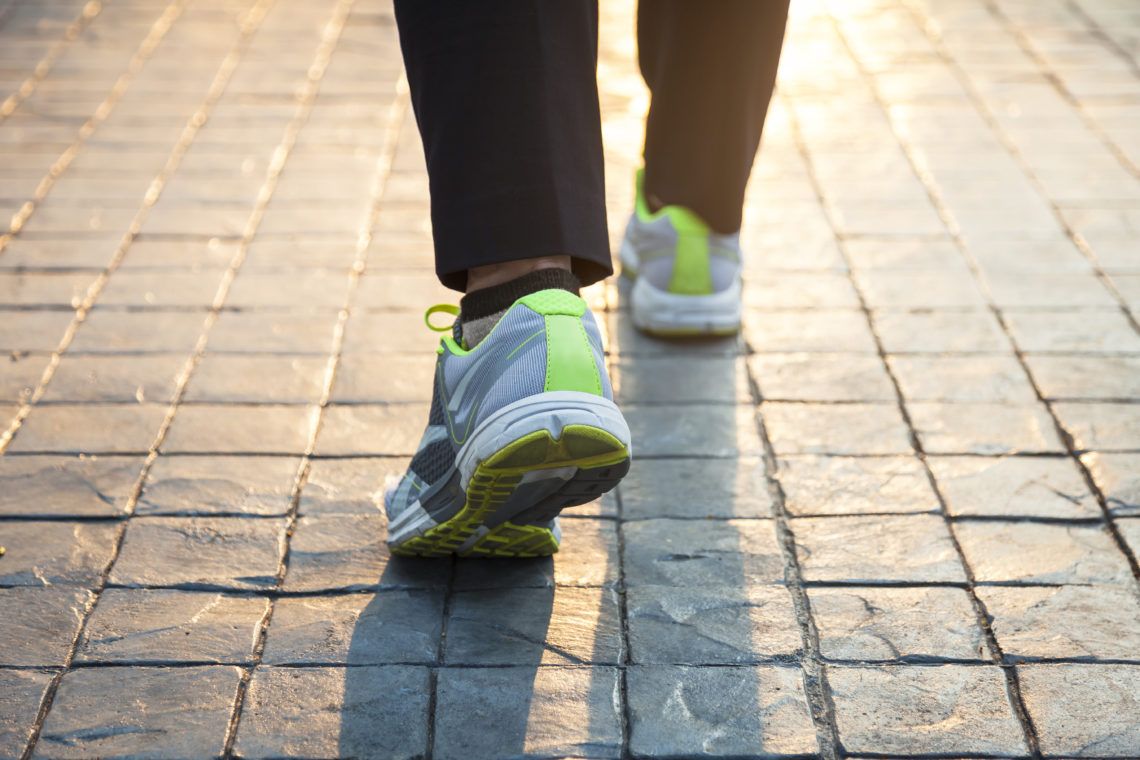
How Fast is Fast Enough
New studies show that slow walking speed at age 45 is associated with accelerated biological aging, neurocognitive function and cognitive decline. However, it is not only the risk of degenerative diseases such as dementia and Alzheimer’s disease that increases as a result of slow walking, but also the risk of cardiovascular disease in particular.
Walking in any form, if carried out correctly and with the right intensity, has been shown to be particularly effective in preventing these diseases (regardless of BMI).
The training recommendations for healthy adults include a) at least 5 aerobic training sessions of at least 30 minutes each with a moderate intensity (150 mins/W. spread over 3-4 days) or b) at least 3 sessions of 30 minutes each with a high intensity in the (an)aerobic range (75 mins/W. spread over 2-3 days). In addition, a strength training of at least 2 units (not on consecutive days) of 20-30 minutes each is recommended.
The metabolic equivalent of task (MET) was introduced as the unit of measurement for intensity.
The MET is the objective measure of the ratio of the rate at which a person expnads energy, relative to to the mass of that person, while performing some specific physical activity compared to a reference. 1 MET corresponds roughly to an energy expenditure of 1 kcal per kilogram body weight per hour.
A moderate intensity is present in the range of 3-5 MET, from 6 MET onwards one speaks of a high intensity.
What does MET have to do with gait speed? In order to experience any health benefit at all from exercise, training recommendations recommend training at least in the range of 3-5 MET. Simplified, many studies have shown that a cadence (number of steps per minute) of 100 steps corresponds to an intensity of 3 MET, i.e. from this speed on, a health-promoting effect occurs at all. Strictly speaking, the cadence is dependent on body height (body height as a simple measure correlates as well as a number of more difficult to determine parameters), so that the range for an equal energy expenditure of 3 MET is between 113 (for a height of 152 cm) and 90 (for a height of 198 cm) steps.
So how can I measure my cadence while walking or striding myself? The easiest way is to use a metronome. If you have a smartphone, you can simply download an appropriate app, set the appropriate cadence (>= 100 BPM), and let the metronome run in the background (listening to music is possible at the same time). Normal pedometers just count the number of steps, but not the intensity. Alternatively, each time you would have to additionally measure the time and write down the start and end value of the steps during this time span. By using a metronome, you have the additional advantage to train your rhythm for efficient walking. From a neuro-athletic point of view, it is particularly useful here to change the pace more often between faster and slower, because our movement output is optimised if we can perform each exercise in the same controlled way at any speed. If you want, you can try this out using the good old squat as an example. Starting from 4 sec. down / 4 sec. up, you can increase it to tempo 1/1 or slow it down to 30/30. 30/30 is much more difficult to control and synchronize. Just give it a try.
All my Power Walking and Nordic Walking courses are structured according to the training recommendations (see above) and always include a neuro-centered focus to additionally train and improve strength, balance and coordination. Through interval training with the functional body weight exercises in between, we work out all three training recommendations in a single hour of Power Walking or Nordic Walking. Pretty cool, right?
Stay healthy and sporty,
Christian






